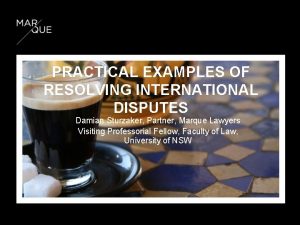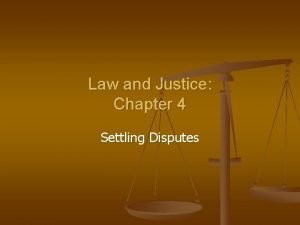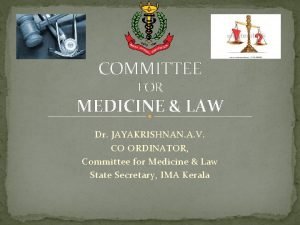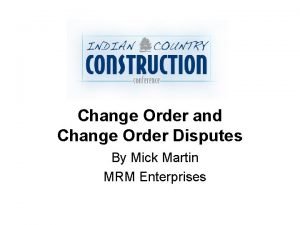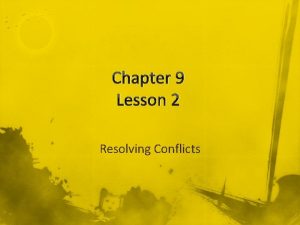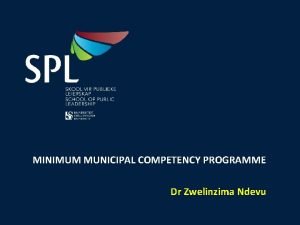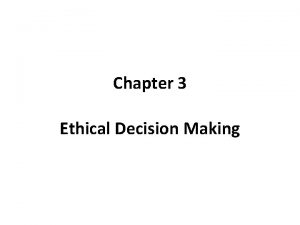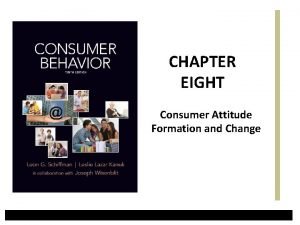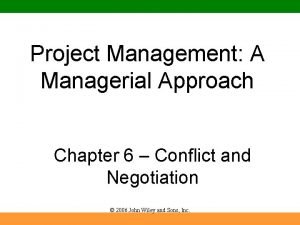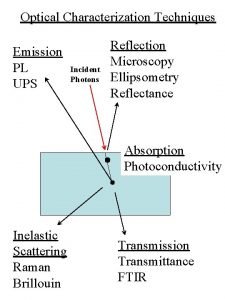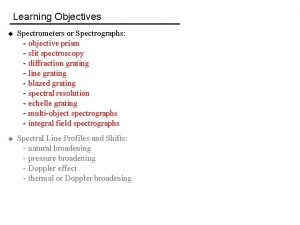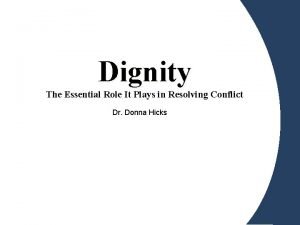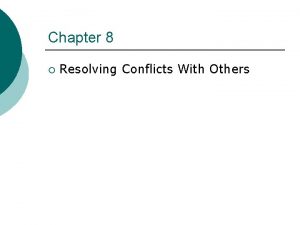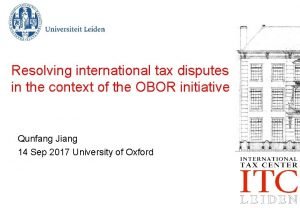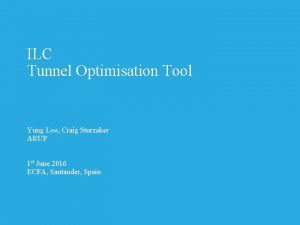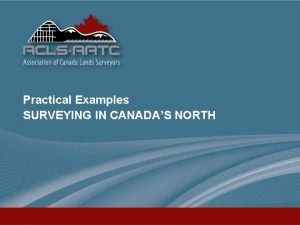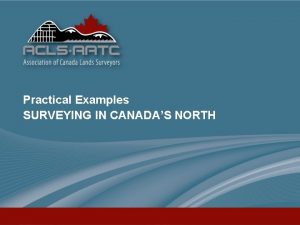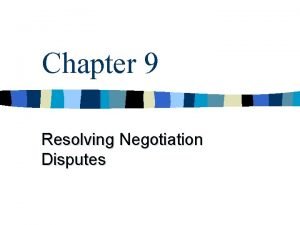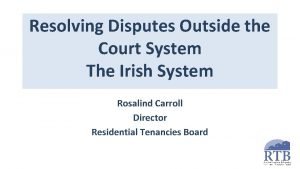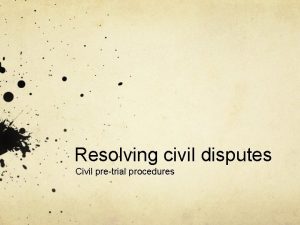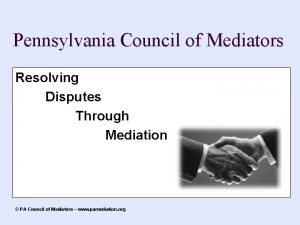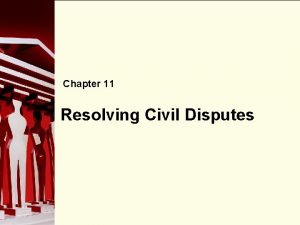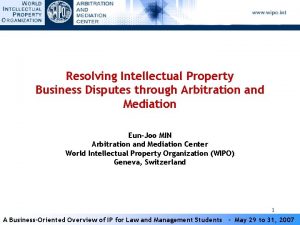PRACTICAL EXAMPLES OF RESOLVING INTERNATIONAL DISPUTES Damian Sturzaker




























- Slides: 28

PRACTICAL EXAMPLES OF RESOLVING INTERNATIONAL DISPUTES Damian Sturzaker, Partner, Marque Lawyers Visiting Professorial Fellow, Faculty of Law, University of NSW

SUMMARY • Methods of resolving disputes – mediation, arbitration, litigation • Factors to consider when choosing method to resolve dispute • Recent developments which will affect resolution methods • What to do when the dispute arises – how to respond to dispute notices, early case management, appointment of counsel • Fee arrangements in international disputes • Case study

HOW COMPANIES DEAL WITH CROSS BORDER RISK • Transfer the risk to another party via limitations of liability, warranties, rights of termination, payment after delivery, advance payment, insurance bonds, bank guarantees and irrevocable letters of credit • Corporate structure • Price the increased risk • Take the legal risk without compensation

METHODS FOR RESOLVING INTERNATIONAL DISPUTES

DIFFERENT FORMS OF DISPUTE RESOLUTION MEDIATION: • when should mediation be considered? • does it mean the same thing everywhere? • advantages and disadvantages • mediation costs and fees • legal representation • outcomes • appropriateness for international disputes • new developments with ICC Rules?

UNCITRAL ENFORCEMENT OF CONCILIATED SETTLEMENT AGREEMENTS (CSA) • Current international frame work UNCITRAL Conciliation Rules (1980) and Model Law on International Conciliation (2002) • No new convention for uniform approach to enforcement • UNCITRAL Working Group II currently working on a harmonised approach to enforcement • Aims to be mediation equivalent of NY Convention – CSA same footing as arbitration awards • Article 1(3) of Model Law as starting point • Suggested minimum requirements to be enforceable – settlement agreement reached in mediation should be in writing and signed by parties • Possible defences to enforcement

MED-ARB • • A happy compromise or the worst of both worlds? • In an arbitration, the arbitrator is neutral and has no additional knowledge of the parties' positions beyond the facts presented in the case. • By contrast, a mediation process requires the parties to disclose additional information, that would otherwise be private and confidential. Med-Arb. . . is the process of the same person acting as (i) a mediator in seeking to facilitate a settlement between the parties, and (ii) an arbitrator to determine the issues in dispute and issue a final and binding award.

ARBITRATION • What is arbitration? • The 1958 Convention on the Recognition of Foreign Arbitral awards (the New York convention) • The UNCITRAL Model Law on international commercial arbitration (1985) (or Model Law)

METHODS RESOLVING INTERNATIONAL DISPUTES (CONTINUED) Reasons for choosing institutional arbitration

METHODS RESOLVING INTERNATIONAL DISPUTES (CONTINUED) Preferred arbitration institutions

FAST TRACK ARBITRATION PLATFORMS CIArb Business Arbitration Scheme • simple, cost-effective, and timely resolution of disputes of low to medium monetary value (£ 5, 000 -£ 100. 000) • legally binding decision on their dispute in less than 90 days • fixed fee of £ 1, 250 + VAT is payable by each party • The Arbitration Act 1996 (The Act) and any amendments to the Act shall apply

CONSIDERATIONS IN FAVOUR OF CHOOSING INTERNATIONAL ARBITRATION VS LITIGATION

LITIGATION • When should litigation be considered? • Costs of litigation? • Appropriateness for international disputes

HAGUE CONVENTION – CHOICE OF COURT • Hague Convention of Choice of Court Agreements, entered in to force 1 October 2015 • Aims to be the equivalent for litigation of the New York Convention on Arbitral Awards. • Deals only with exclusive choice of court agreements in international civil or commercial matters. Does not apply to certain matters eg consumer and employment. • Recognition and enforceability of judgments between member states. Enforceability subject to exceptions (Articles 5, 6, 9, 11). • Number of signatories not at the level of New York Convention…yet, but includes major trading partners Singapore and US

SINGAPORE INTERNATIONAL COMMERCIAL COURT • SICC launched in early 2015 • SICC as a new forum for international disputes following ratification of Hague Convention in early 2016. • Implications for Australian parties entering international commercial transactions. • 3 decisions published so far (links to Australia in two – one matter involved an Australian mining company and another dealt with a dispute arising out of an energy project in Queensland) • An international network of ICCs, Australia next?

PRELIMINARIES ONCE ARBITRATION OR LITIGATION IS PROBABLE

HOW TO RESPOND TO A DISPUTES NOTICE • Should a party take the initiative and commence arbitration or litigation first? • Whereabouts of assets • Availability of interim relief • Use of non binding dispute resolution mechanisms • Just don’t respond? • Amending the disputes clause

USING EARLY EVALUATION TO QUANTIFY THE RISK • Some companies have a policy to prepare an early case assessment (ECA) • ECA is an informed estimate of likely outcome, costs, legal or factual issues • Balancing best, worst and most likely outcomes for liability (or recovery) and costs • Be wary of ECA’s that are based on only one side’s documents or witness accounts • An ECA will inform a party of necessary documents and witnesses early in the process (be aware of restrictions on interviewing or document collection) • Be aware of witness bias-both favourable and unfavourable

FEE ARRANGEMENTS IN INTERNATIONAL DISPUTES Fee arrangements can include: • Hourly rates • Contingency fee based on success in the proceeding • A fixed one-off or annual retainer plus a contingency fee, which is a common arrangement in litigation in jurisdictions such as France • An agreement that the lawyer receives a bonus based on a positive outcome, to write off a portion of the fees if the outcome is negative, or both together • Fixed price arrangements under which the lawyer or firm agrees to conduct the arbitration for a set amount for the entire proceeding, or for each stage • A fee cap, where the lawyer applies an hourly or other rate and where the total will not exceed a given amount • Blended rate fees, where instead of a firm's different lawyers billing at different rates, they all bill at the same rate • Simple discounts on the lawyers' hourly rates, which may increase with the volume of work done • A combination of any of the above

CONTINGENCY FEES AND LITIGATION FUNDING IN AUSTRALIA AND ASIA Country Third party funding Contingency fee agreements Australia Permitted Prohibited Singapore Prohibited China Permitted Hong Kong Prohibited Permitted in arbitration only

A CASE STUDY • Bob had a company • Peter liked the company so much he wanted to buy it (and Bob) • Bob liked Peter (or so it seemed) and was happy to sell the company and keep working • Bob also liked Yan (a lot and in a creepy way) • They started doing evil things • Yan left the company • They did eviler things • Peter found out. . .

A FRACTURED FAIRYTALE

ONCE UPON A TIME • And then there was a very bad arbitrator. .

ONCE UPON A TIME • And a very worse solicitor. .

ONCE UPON A TIME • And to make it worse a smug barrister (as if there was another kind). .

WE WERE MODEL ARBITRANTS • We drafted a submission agreement • They said no • We asked for an undertaking that they not deal with the shares • They said no • We applied for interim measures in the arbitration • They and then the arbitrator said no

WE STOPPED BEING MODEL ARBITRANTS • • We commenced AAA proceedings They applied for interim relief (in court this time) Another (lengthy) boring hearing Settlement meeting A new form of mediation Settlement Rapprochement

THANK YOU Any questions?
 Damian sturzaker
Damian sturzaker Prorupted state ap human geography
Prorupted state ap human geography Allocational boundary dispute definition
Allocational boundary dispute definition Evolution of the contemporary political pattern
Evolution of the contemporary political pattern Why might fishing disputes arise in the region?
Why might fishing disputes arise in the region? Chapter 4 settling disputes
Chapter 4 settling disputes Anatomy of industrial disputes
Anatomy of industrial disputes Consumer disputes redressal agencies
Consumer disputes redressal agencies Consumer disputes redressal agencies
Consumer disputes redressal agencies Change order disputes
Change order disputes Resolving power equation
Resolving power equation Resolving power equation
Resolving power equation What is the resolving power of human eye
What is the resolving power of human eye Chapter 9 resolving conflicts and preventing violence
Chapter 9 resolving conflicts and preventing violence Chapter 9 lesson 2 resolving conflicts
Chapter 9 lesson 2 resolving conflicts 5 steps in resolving ethical dilemmas
5 steps in resolving ethical dilemmas The dispersive power of a grating
The dispersive power of a grating Ethical dilemma definition
Ethical dilemma definition Chapter 9 resolving conflicts and preventing violence
Chapter 9 resolving conflicts and preventing violence Recognizing and resolving abo discrepancies
Recognizing and resolving abo discrepancies Cognitive consumer
Cognitive consumer The favored technique for resolving conflict is
The favored technique for resolving conflict is Resolving power
Resolving power Resolving power
Resolving power Dignity its essential role in resolving conflict
Dignity its essential role in resolving conflict Resolving conflict meaning
Resolving conflict meaning Resolving power
Resolving power Ai american puzzle
Ai american puzzle Tucker turtle pdf
Tucker turtle pdf
